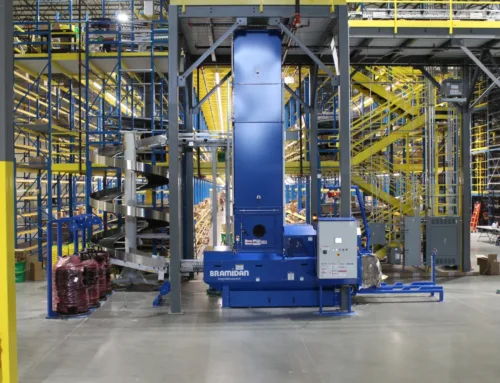
Is your business facing the tough decision of liquidation? Understanding the commercial liquidation process is crucial for a successful transition. This checklist will guide you through evaluating your financials, communicating with stakeholders, and planning your asset liquidation effectively. By following these steps, you can navigate potential pitfalls and maximize your returns using End2End Logix services. Address your concerns and ensure a smooth liquidation process by learning what liquidation involves and how strategic partnerships can make a significant difference. Prepare yourself to face this challenge with confidence.
Understand the Commercial Liquidation Process

Commercial liquidation involves selling off a company’s assets in order to settle debts and close operations. This process impacts various stakeholders, including creditors and employees through strategic partnerships. You will learn about crucial elements such as liens and bonds, as well as the role of auctions in maximizing asset recovery. Understanding these factors will empower you to navigate liquidation efficiently with commercial liquidation services.
Define Commercial Liquidation and Its Implications
commercial liquidation services refer to the process of converting a company’s assets into cash to settle outstanding debts, especially during voluntary liquidation situations where business owners decide to cease operations. Understanding the implications of liquidation is essential for your organization, as proper accounting practices and effective outsourcing strategies, including end2end logix services, can significantly impact asset recovery outcomes. By establishing strategic partnerships and being well-informed about the liquidation process, you can make better decisions that protect your interests and ensure a smoother transition during challenging times.
Identify Key Stakeholders Involved
In the commercial liquidation process, utilizing end2end logix services and identifying key stakeholders is crucial for effective asset recovery and management. Stakeholders include the debtor, creditors, and external auditors, each of whom plays a pivotal role in assessing the company’s financial statements and determining the net realizable value of assets. Establishing strategic partnerships and understanding ownership structures can help you navigate potential challenges, ensuring a smoother liquidation that meets your organization’s needs.
The liquidation process offers clarity and direction, but understanding your financials through commercial liquidation services is the next step. Assessing your business’s financial health will reveal what you need to recover and move forward with strategic partnerships.
Evaluate Your Business Financials

Evaluate Your Business Financials
To prepare for company liquidation, start by gathering your financial statements and key data with our commercial liquidation services. Assess your liabilities and outstanding debts to understand your obligations. Analyze asset valuations in conjunction with current market conditions to determine the market value of your assets. These steps are vital for informed decision-making during the dissolution process and will help protect your interests as you navigate the complexities ahead through strategic partnerships.
Gather Financial Statements and Key Data
Gathering financial statements and key data is a critical first step in preparing for **commercial liquidation services**. You should start by compiling your income statements, balance sheets, and cash flow statements, ensuring they align with the latest accounting standards. This will provide a clear picture of your liabilities, allowing you to assess the value of your equipment and other assets, particularly in the retail sector, helping you make informed decisions during the liquidation process. Establishing **strategic partnerships** can further streamline this process:
- Compile income statements to understand revenue trends.
- Assess balance sheets to evaluate liabilities and asset values.
- Review cash flow statements to monitor liquidity and operational efficiency.
- Ensure compliance with accounting standards to streamline financial reporting.
Assess Liabilities and Outstanding Debts
To effectively prepare for commercial liquidation services, it is crucial to assess your liabilities and outstanding debts. Begin by reviewing the complete list of creditors and the total amount owed, ensuring that you account for all obligations, including loans and accounts payable. Understanding your debts will enable you to prioritize repayments and communicate clearly with your liquidator about how to handle each creditor, ultimately impacting how much of your assets—and even intellectual property—you can recover during this challenging time. Establishing strategic partnerships can also enhance your recovery process by leveraging external expertise and resources.
Analyze Asset Valuations and Market Conditions
Understanding asset valuations and current market conditions is critical as you prepare for commercial liquidation services. You need to accurately evaluate your corporate inventory‘s market value, as fluctuations can significantly affect the cash recovery you can achieve. Consult with asset valuation experts and consider legal implications regarding shareholder interests and strategic partnerships to ensure that all evaluations are compliant with relevant laws, providing you with a solid foundation for informed decision-making.
You’ve taken a hard look at your finances, and now it’s time to turn your focus outward by establishing strategic partnerships. Communicating effectively with employees and stakeholders is vital to keeping everyone informed and engaged in the process ahead. Additionally, utilizing commercial liquidation services can support your financial strategies.
Communicate With Employees and Stakeholders

Developing a clear communication plan is vital as you approach business liquidation with commercial liquidation services. Addressing employee concerns and available options ensures transparency, which fosters trust during this transition. Additionally, informing stakeholders and creditors about the financial statement and any changes directly related to collateral clarifies the situation and aids in managing expectations. Forming strategic partnerships is crucial for a smooth process.
Develop a Clear Communication Plan
When developing a clear communication plan during commercial liquidation, it’s vital to address the concerns of employees and stakeholders, particularly lenders and creditors. Transparency about the insolvency process and how it relates to property assets, potential expenses, and available resources will help foster trust. By providing marketing materials that clearly outline the situation, including explanations of what is liquidation, you can ensure that all parties are on the same page, ultimately leading to a more effective and smoother liquidation process. Leveraging commercial liquidation services and fostering strategic partnerships can further enhance the efficiency of the process.
Address Employee Concerns and Options
Addressing employee concerns is a critical aspect of your liquidation plan. It’s crucial to communicate openly about the challenges ahead and the options available, such as potential severance packages or outplacement services to assist during this transition. By providing clarity on the liquidation process and what it entails for employees, you foster trust and help them navigate their own uncertainties:
- Outline the timeline and steps involved in the liquidation plan.
- Discuss options available for impacted employees, including support services.
- Encourage open dialogue to address any questions or concerns.
Inform Stakeholders and Creditors
To effectively inform stakeholders and creditors during the commercial liquidation process, you must provide clear and consistent updates about your organization‘s financial situation. This communication should outline key details such as the reasons for liquidation, the timeline, and any potential effects on their interests. By engaging stakeholders early and transparently, you establish trust and help manage their expectations, which can lead to smoother negotiations and potentially better asset recovery outcomes.
Engage your team and stakeholders now, as clarity will guide your next steps. It’s time to focus on the plan for asset liquidation, turning discussion into action with purpose.
Plan for Asset Liquidation

Plan for Asset Liquidation
Begin by cataloging your inventory and business assets to create a comprehensive overview of what will be liquidated. Next, determine the most effective methods for selling these assets. Also, consider the legal and tax implications associated with the liquidation process. Each of these steps is vital to ensure maximum recovery and compliance during this transition.
Catalogue Inventory and Business Assets
Cataloging your inventory and business assets is a critical step in the commercial liquidation process, enabling you to gain a comprehensive understanding of what will be sold. Begin by listing all tangible items, such as equipment, inventory, and property, along with their current condition and estimated market value. This thorough inventory assessment not only aids in maximizing asset recovery but also ensures you have a clear picture of your resources, allowing you to make informed decisions throughout the liquidation process.
Determine Best Methods for Selling Assets
To maximize the value of your assets during commercial liquidation, evaluate the most effective selling methods tailored to your inventory type. Options such as online auctions, liquidation sales, or selling directly to buyers can help accelerate the process and enhance recovery. By considering market demand and asset condition, you ensure that each decision aligns with your goal of obtaining the best possible return, ultimately aiding in settling outstanding debts efficiently.
Consider Legal and Tax Implications
As you prepare for commercial liquidation, it is vital to consider the legal and tax implications that may arise during this process. Consulting with a qualified legal or tax professional ensures compliance with relevant regulations, helping you avoid potential pitfalls that could affect asset recovery. By understanding how liquidation can impact your tax liabilities and the legal responsibilities of selling assets, you can make informed decisions that protect your interests and streamline the overall process.
As you finalize your plan, the choices ahead sharpen in focus. Selecting the right strategy will determine how effectively you recover assets and navigate this critical moment.
Choose the Right Liquidation Strategy

Choosing the right liquidation strategy is critical to maximizing your asset recovery. You will compare auction vs. direct sales to determine which method suits your needs better. Additionally, evaluating professional liquidation services can provide you with insights into efficient processes, while understanding the benefits of a liquidation expert can significantly enhance your outcomes. Each of these aspects plays a vital role in ensuring you achieve the best possible results during this transition.
Compare Auction vs. Direct Sales
When deciding between auction and direct sales for your commercial liquidation, consider the unique advantages each method offers. Auctions can create competitive bidding environments, potentially driving prices higher, while direct sales might provide a faster route to cash, ideal for urgent financial needs. Assess your asset type and market conditions to determine which strategy aligns best with your recovery goals, ensuring you maximize the value of your assets in the liquidation process.
Evaluate Professional Liquidation Services
Evaluating professional liquidation services is essential for streamlining your asset recovery process. Professional liquidators bring experience and market knowledge that can significantly enhance the efficiency of the liquidation process, enabling you to achieve higher returns on your assets. Their expertise in auction strategies, marketing, and logistics will help you navigate complexities, ensuring your liquidation aligns with your financial goals:
- Assess the liquidator‘s experience in handling assets similar to yours.
- Inquire about their network and strategies for reaching potential buyers.
- Review their approach to compliance and asset valuation to ensure transparency.
Understand the Benefits of a Liquidation Expert
Engaging a liquidation expert provides numerous advantages that can significantly enhance your recovery efforts. These professionals bring valuable experience and market insights, allowing them to implement effective strategies tailored to your specific circumstances. By leveraging their expertise, you can navigate the complexities of commercial liquidation more efficiently, maximizing asset value and ensuring smoother transactions:
- Benefit from specialized knowledge that guides you through the liquidation process.
- Access a network of potential buyers that increases the chances of higher recovery.
- Receive personalized advice on compliance and asset valuation, fostering transparency throughout the process.
Once you’ve chosen the right strategy, you stand on the brink of a crucial shift. Preparing for what comes next will shape your path forward and set the stage for recovery.
Prepare for Post-Liquidation Steps

After completing the commercial liquidation process, you must focus on several critical post-liquidation steps. First, understanding the process for finalizing accounts ensures all financial obligations are settled accurately. Next, addressing tax responsibilities is essential to avoid future liabilities. Finally, developing a plan for future opportunities can help you move forward strategically, leveraging lessons learned from the liquidation experience.
Understand the Process for Finalizing Accounts
To effectively finalize accounts after commercial liquidation, you need to ensure that all financial obligations are settled transparently. Begin by verifying that all creditor claims have been addressed and that outstanding balances are accurately recorded. This meticulous approach not only prevents future liabilities but also provides a clear understanding of the financial outcome, allowing you to move on confidently to future opportunities.
Address Tax Responsibilities
Addressing tax responsibilities after commercial liquidation is essential to prevent future issues. You need to consult with a tax professional who can guide you through the necessary filings and ensure compliance with all applicable regulations. Understanding the implications of asset sales on your tax situation can help you avoid unexpected liabilities, allowing you to focus on rebuilding your business or transitioning to new opportunities.
Develop a Plan for Future Opportunities
After completing the commercial liquidation process, develop a detailed plan for future opportunities to pave the way for your next business venture. Reflect on the lessons learned during the liquidation, focusing on aspects such as financial management and market demand, which can guide your strategic decisions moving forward. By identifying potential markets or sectors to explore, you position yourself to rebuild and venture successfully in new directions, ensuring a more resilient approach to future business endeavors.
Conclusion
Preparing for commercial liquidation requires a comprehensive checklist to ensure a smooth process and maximum asset recovery. Key tasks include evaluating financials, communicating with stakeholders, and choosing the right liquidation strategy. Understanding each element, from stakeholder involvement to legal implications, empowers you to make informed decisions that protect your interests. Emphasizing these steps not only streamlines liquidation but also positions you for future opportunities with renewed strategic focus.
Share This Story, Choose Your Platform!
Get In Touch
Phone: (847) 722-6942
Email: sales@end2endlogix.com
Web: end2endlogix.com


